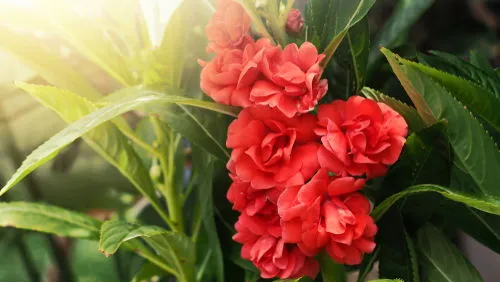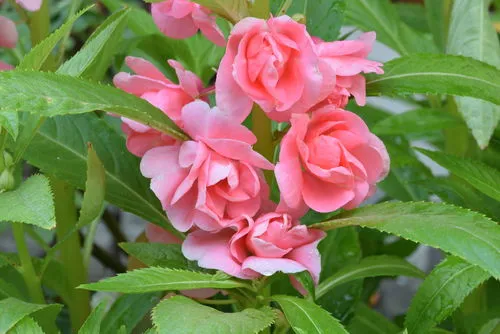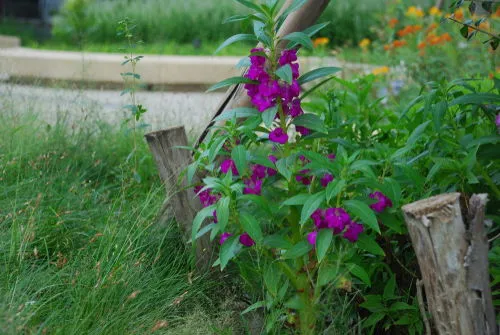The Ultimate Guide to Growing and Caring for Balsam Flower
Are you looking to add a splash of color to your garden or home? Look no further than the balsam flower, also known as Impatiens balsamina. This annual flowering plant is a favorite among gardeners for its vibrant blooms and easy maintenance. Whether you’re a seasoned gardener or a beginner, this guide will walk you through everything you need to know about growing and caring for balsam flowers.
What is Impatiens Balsamina?
Impatiens balsamina, commonly known as Garden balsam, is a fast-growing annual plant that can be easily grown both indoors and outdoors. Native to the Himalayan region, this plant is also known as Gul-mehndi in India. It produces stunning flowers in shades of pink, purple, and red, making it a beautiful addition to any home or garden.
Quick Facts About Balsam Flower
| Plant name | Impatiens balsamina |
|---|---|
| Common names | Balsam, Garden balsam, Rose balsam, Touch-me-not, Spotted Snapweed |
| Family | Balsaminaceae |
| Found in | India, Myanmar, tropics of Asia |
| Flower color | Pink, purple, red, lilac, white |
| Flower blooming season | Spring, summer, and fall |
| Toxicity | Low |
| Benefits | Traditional medicine and dye |
Plant Description
The balsam flower grows to a height of 20 to 75 cm and features thick, succulent stems with elliptical leaves arranged in a spiral pattern. The soft, straight stems can appear green or red, and the plant produces cup-shaped flowers that are pollinated by insects, bees, and nectar-feeding birds. The fruits are capsules that burst open to spread seeds, ensuring the plant’s propagation.

Benefits and Uses of Balsam Flower
Medicinal Uses
Various parts of the balsam flower are used in traditional medicine, particularly for treating skin disorders. Here are some of its medicinal applications:
- Juice extracted from the leaves is used to cure warts and snakebites.
- The flower is used to treat burns.
- In Asia, it is used to treat ailments such as rheumatism and fractures.
- In Korea, it is known as Bongseonhwa dae and is used to treat constipation and gastritis.
Used as Dye
In Southeast Asia, the balsam flower is also used to make dyes. For example, in Nepal, the leaves are crushed to color fingernails on the day of Shrawan Sankranti.
Ornamental Purposes
The colorful flowers make balsam a popular choice for landscaping. The plant attracts butterflies and pollinators, making it ideal for theme-based gardens like Butterfly Gardens, Shade Gardens, and Pollinator Gardens. It can also be grown in containers indoors or in home gardens.

How to Care for Balsam Flower
Sunlight
Balsam flowers thrive in direct sunlight for at least six hours a day and partial shade for a minimum of two hours. Protect them from the strong afternoon sun to prevent wilting.
Soil
The plant prefers well-drained soil rich in organic matter. The soil should be kept moist but not waterlogged. A slightly acidic to neutral pH is ideal.
Watering
Water the plant regularly to maintain optimal moisture levels. Avoid overwatering to prevent root rot.
Fertilizer
Use a balanced, slow-release flower fertilizer to ensure healthy growth.
Temperature and Humidity
Balsam flowers cannot withstand cold temperatures and grow best in warm conditions. They can tolerate dry air if the soil is kept moist.
Pruning
Pruning is not necessary but trimming the plant up to a few inches can promote bushy growth.
Potting and Repotting
Plant balsam flowers in a large flowerpot with adequate drainage holes. Use a good quality commercial potting mix. Repotting is generally not required if a large container is used initially.

Colorful Garden Addition
Balsam flowers come in various cultivars, each with unique growth habits, flower shapes, and colors. Here are some popular varieties:
- Blackberry Trifle: Known for its purple and white variegated petals.
- Bush Mix: Stays compact and full, unlike other varieties that become lanky by the end of the growing season.
- Tom Thumb Mix: Ideal for the edge of a border or a container garden, averaging 8 to 10 inches tall.
How to Grow Balsam Flower
Balsam flowers can be easily grown from seeds that sprout in about four days under ideal soil conditions. Start planting them indoors six to eight weeks before the last expected frost date. Press the seeds gently into a seed-starting mix. Once the soil temperature outside warms up, transplant the seedlings outdoors, spacing them 12 inches to three feet apart.
Growing Tips for Balsam Flower
- Ensure flowerpots have sufficient drainage holes when growing indoors.
- Light accelerates seed germination, so do not cover the seeds fully with soil.
- Select a container that allows the flowers to be 12 to 18 inches apart.
- Always check the soil before watering to avoid soggy conditions or waterlogging.
Conclusion
The balsam flower is a versatile and beautiful addition to any garden or home. With its vibrant colors and easy maintenance, it’s no wonder this plant is a favorite among gardeners. Whether you’re using it for medicinal purposes, as a dye, or simply to beautify your space, the balsam flower is sure to impress. So why wait? Start growing your own balsam flowers today and enjoy the myriad benefits they offer!
